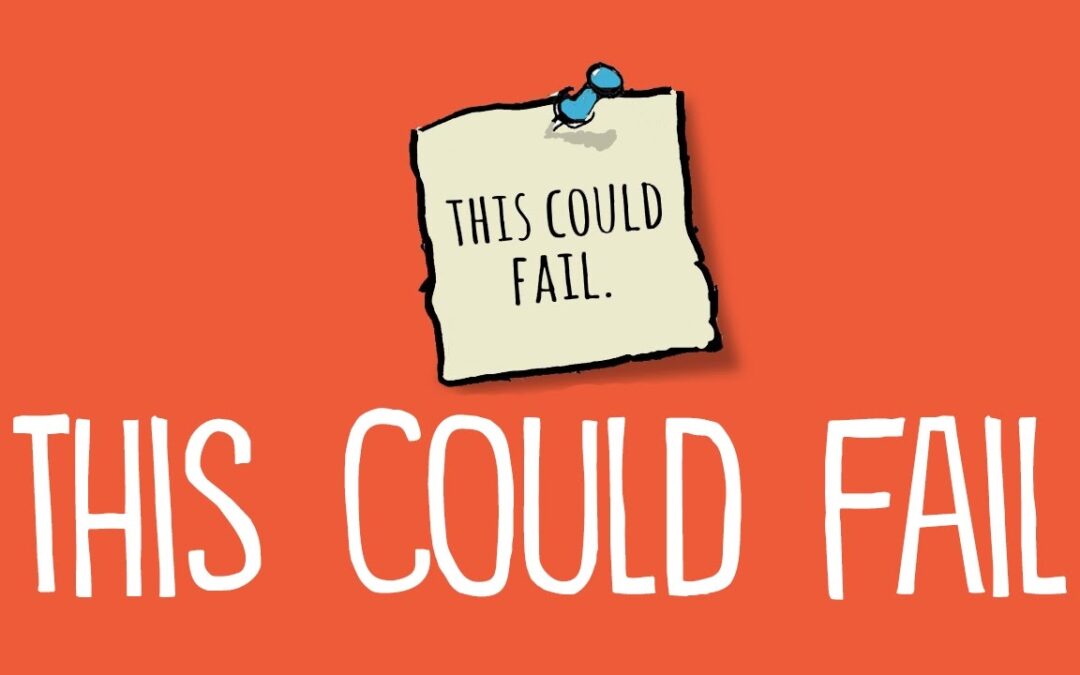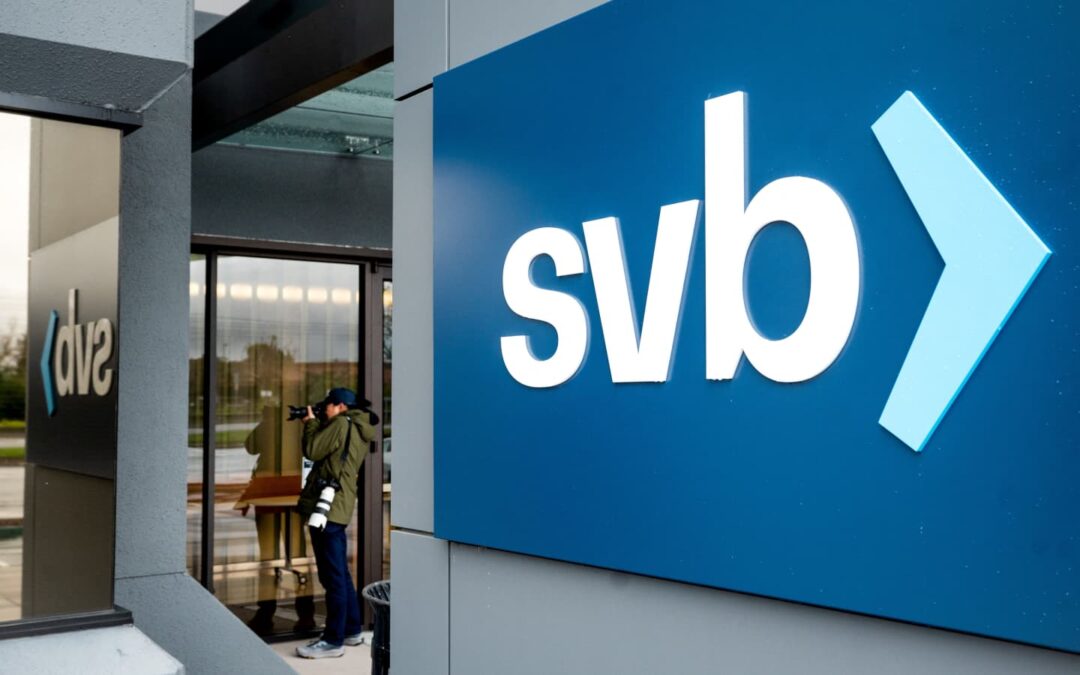
by Robyn Bolton | Apr 19, 2023 | Innovation, Leadership
A couple of weeks ago, I wrote about my hatred of failure while acknowledging that there are things I hate more (inertia, blind allegiance to the status quo, unwillingness to try) that motivate me to risk it.
In response, I received this email from my friend and former colleague Daymara, now the Founder & CEO of Rockin’ Baker in Fayetteville, AR (shared here with her permission)
I’m the opposite. I love failing! That’s when I learn the most, that I question what and how I could better, question more and more. It triggers my brain to look back, re-evaluate, assess and spring forward. I wouldn’t be here today if I had not risked. I don’t think anyone starts anything thinking when they’d fail. But some of us aren’t afraid or hate it. I wouldn’t be here if I hate failing, wouldn’t have left my country looking for a safer place, wouldn’t have launched RBI because I didn’t have any entrepreneurial experience not even in the hospitality industry, wouldn’t have switched to focus on neurodiversity and so much more.
.
Because I came to the US, I got to meet you. Yes, I failed at seeing the signs & lost over 60% of my savings just 2 weeks before leaving Venezuela. I could’ve decided to stay because maybe it was going to be harder and the risk of failing in a country I didn’t know higher. I had a plan. If it didn’t work, come back home & start all over again.
.
I started RBI understanding that I could fail. I told myself, if I did, at least I would have an answer. Yes, I’m failing terribly at making this social enterprise work. Yet, I’ve gained so much knowledge about humanity, our differences, the unfairness that neurodivergents have to live daily, running a social enterprise and so much more. If I had hated failing, I wouldn’t be sharing my experience with other entrepreneurs so they don’t make the same mistakes I made. I wouldn’t be advocating for more equitable places for all, including women.
.
Failing feeds me to do better, to ask more questions, to explore more, to lead me to become better. I don’t love failing, I welcome it.
.
My first thought was, “Wow, this is so healthy! I wish more people felt and acted this way!”
My second thought was, “I wouldn’t apply the word ‘fail’ to any of these situations. You’re trying, learning, changing, and trying again.:
Just because you don’t get the expected outcome the first time doesn’t mean you failed.
Or does it?
What the Dictionary Says
According to Oxford Languages, “fail” (verb) means
- Be unsuccessful in achieving one’s goal, “he failed in his attempt to secure election.”
- Neglect to do something, “the firm failed to give adequate risk warnings.”
- Break down; cease to work well, “a truck whose brakes had failed.”
True but contextual:
- If success is defined as launching a new product, but customer feedback proves there’s no demand or willingness to pay, is shutting it down a failure?
- If you neglect something that isn’t important or doesn’t have significant ramifications, like not eating breakfast, did you fail or simply forget, run out of time, or make a mistake?
- If something works but not well, like an expense reporting system, is it a failure or just burdensome, a pain, or a necessary evil?
Also, incomplete.
What People Say
“Fail” has so many definitions and meanings in Daymara’s telling of her story. In addition to some of the dictionary’s definitions, she also uses “Fail” to mean:
- Take smart risks, “I could’ve decided to stay because maybe it was going to be harder and the risk of failing in a country I didn’t know higher. I had a plan. If it didn’t work, come back home & start all over again.”
- Get new information to facilitate learning,
- “I’m the opposite. I love failing! That’s when I learn the most, that I question what and how I could better, question more and more. It triggers my brain to look back, re-evaluate, assess and spring forward.”
- I started RBI understanding that I could fail. I told myself, if I did, at least I would have an answer.
- Adapt and change based on learning, “wouldn’t have switched to focus on neurodiversity”
- Grow, improve, evolve, “Failing feeds me to do better, to ask more questions, to explore more, to lead me to become better. I don’t love failing, I welcome it.”
What Do You Say?
Like “Innovation,” “Failure” is a word we all use A LOT that no longer has a common definition. In the dictionary, failure is bad and to be avoided. To Daymara and scores of entrepreneurs and innovators, failure is wonderful and welcome.
Progress, either towards or away from failure, requires us to define “Failure” for ourselves and our work and agree on a definition with our teammates.
So, tell me:
- What is failure to you?
- To your team?
- To your boss?

by Robyn Bolton | Apr 11, 2023 | Innovation, Leadership
To Cede, or to Seed, that is the question:
Whether ‘tis nobler in the mind to suffer
The slings and arrows of a down quarter or year,
Or to take arms against the Tyranny of Now
And by opposing overcome it.
To Cede – to withdraw,
Spend no more; and by stopping to say we end
The innovation and the thousand natural insights
That pave the way: ‘tis a necessity
Stoically to be endured
To Seed, to spend;
To spend perchance to grow – ay there’s the rub:
For in that spending on innovation what revenue may come,
When we have emerged from this uncertainty,
Must give us hope – there’s the advantage
That makes success of such a business
- Hamlet, if he were a senior executive making budget decisions during periods of uncertainty (and with my deepest apologies to Shakespeare)
The Question
To cede or seed is the question facing so many executives right now.
The same question faced executives in 2001, 2008, and 2020.
And an answer is required.
But what’s the right answer?
As a friend likes to say, “It’s contextual.”
To Cede
Cede is the most common answer for two main reasons: (1) executives feel they don’t have a choice because super-senior executives mandated an x% budget, or (2) executives need to boost results by allocating resources to things with “guaranteed” ROI.
Whatever the reason, innovation is a luxury the business can no longer afford, and the core business is a necessity to be supported at all costs. As a result, rather than scaling back a little in a lot of places, managers believe it is safer and easier to eliminate innovation entirely and maintain, or even increase, resources for operations.
Sometimes, this is also the right answer.
If the business is hemorrhaging cash, its value is plummeting, and people are questioning whether or not it can stay in business, then Cede is the right answer. There’s no sense in investing for success in one, three, or five years if there’s little chance of seeing the next day, week, or month.
But odds are, you’re not in that situation.
To Seed
The Dot-com bubble. The Great Recession. COVID-19 recession.
The 21st century has allowed us to study the impact of different decisions during and after economic crises.
And when it comes to innovation, evidence shows that companies that continue to invest in innovation during times of economic uncertainty outperformed the market by 10% during the crisis and by up to 30% in the five years immediately following the crisis.
But not all companies.
A study of 4,700 companies during three global recessions (1980 – 1982, 1990 – 1991, and 2000 – 2002) found that “Businesses that boldly invest more than their rivals during a recession… enjoy only a 26% chance of becoming leaders after a downturn.” However,
“Companies that master the delicate balance between cutting costs to survive today and investing to grow tomorrow do well after a recession. Within this group, a subset that deploys a specific combination of defensive and offensive moves has the highest probability—37%—of breaking away from the pack. These companies reduce costs selectively by focusing more on operational efficiency than their rivals do, even as they invest relatively comprehensively in the future by spending on marketing, R&D, and new assets. Their multipronged strategy…is the best antidote to a recession.”
The takeaway – Seed, don’t splurge.
The Answer (sort of)
It’s easy, and incredibly biased, of me to assert that there is one and only one right answer. That the executive who cuts innovation spending (along with travel budgets and probably a few other things) is woefully short-sighted and dooming his business to a never-ending cycle of cutting back, losing ground, and racing to catch up, only to cut again when the next downturn hits.
It’s also very unfair because I’d be using history and theory to judge an executive grappling with the reality of organizational mandates, limited resources, and very real responsibilities.
The right answer is the one you can live with.
Ceding makes sense in the short term, but it’s a liability in the medium and long term.
Seeding pays off in 2-3 years, but you’ll endure skepticism and risk your bonus or job while waiting.
Research says Seeding is the right answer.
Reality often dictates Ceding.
The choice is yours.
Just remember that, like Hamlet, you live (or die) with the results.

by Robyn Bolton | Apr 2, 2023 | Innovation, Tips, Tricks, & Tools
The Official Story
“Innovation” is not peanut butter.
You can’t smear it all over everything and expect deliciousness.
When discussing innovation, you must be specific so people know what you expect. This is why so many thought leaders, consultants, and practitioners preach the importance of defining different types of innovation.
- Clayton Christensen encourages focusing on WHY innovation is happening – improve performance, improve efficiency, or create markets – in his 2014 HBR article.
- The classic Core/Adjacent/Transformational model focuses on WHAT is changing – target customer, offering, financial model, and resources and processes.
- McKinsey’s 3 Horizons focus on WHEN the results are achieved – this year, 2-3 years, 3-6 years.
It’s easy to get overwhelmed by the options and worry about which approach is “best.” But, like all frameworks, they’re all a little bit right and a little bit wrong, and the best one is the one that will be used and get results in your organization.
The REAL story
Everything in the official story is true, but not the whole truth.
“Innovation” is not peanut butter.
You can’t smear it all over everything and expect deliciousness.
When doing innovation, you must remember your customer – the executives who make decisions, allocate resources, and can accelerate or decimate your efforts.
More importantly, you need to remember their Jobs to be Done (JTBD) – keep my job, feel safe and respected, and be perceived as competent/a rising star – because these jobs define the innovations that will get to market.
3 REAL types of innovation
SAFE – The delightful solution to decision-makers’ JTBD
Most closely aligned with Core innovation, improving performance or efficiency, and Horizon 1 because the focus is on improving what exists in a way that will generate revenue this year or next. Decision-makers feel confident because they’ve “been there and done that” (heck, doing “that” is probably what got them promoted in the first place). In fact, they’re more likely to get in trouble for NOT investing in these types of innovations than they are for investing in them.
STRETCH – The Good Enough solution
Most like Adjacent innovation because they allow decision-makers to keep one foot in the known while “stretching” their other foot into a new (to them) area. This type of innovation makes decision-makers nervous because they don’t have all the answers, but they feel like they at least know what questions to ask. Progress will require more data, and decisions will take longer than most intrapreneurs want. But eventually, enough time and resources (and ego/reputation) will be invested that, unless the team recommends killing it, the project will launch.
SPLATTER – The Terrible solution
No matter what you call them – transformational, radical, breakthrough, disruptive, or moonshots – these innovations make everyone’s eyes light up before reality kicks in and crushes our dreams. These innovations “define the next chapter of our business” and “disrupt ourselves before we’re disrupted.” These innovations also require decision-makers to let go of everything they know and wander entirely into the unknown. To invest resources in the hope of seeing the return (and reward) come back to their successor (or successor’s successor). To defend their decisions, their team, and themselves when things don’t go exactly as planned.
How to find the REAL type that will get real results.
- “You said you want X. Would you describe that for me?” (you may need to give examples). When I worked at Clayton Christensen’s firm, executives would always call and ask for our help to create a disruptive innovation. When I would explain what they were actually asking for (something with “good enough” performance and a low selling price that appeals to non-consumers), they would back away from the table, wave their hands, and say, “Oh, not that. We don’t want that.”
- “How much are you willing to risk?” If they’re willing to go to their boss to ask for resources, they’re willing to Stretch. If they’re willing to get fired, they’re willing to Splatter. If everything needs to stay within their signing authority, it’s all about staying Safe.
- “What would you need to see to risk more?” As an innovator, you’ll always want more freedom to push boundaries and feel confident that you can convince others to see things your way. But before you pitch Stretch to a boss that wants Safe, or Splatter to a boss barely willing to Stretch, learn what they need to change their minds. Maybe it will be worth your effort, maybe it won’t. Better to know sooner rather than later.

by Robyn Bolton | Mar 22, 2023 | Innovation
How do people react when you say “innovation?”
- Lean forward, eyes glittering, eager to hear more
- Stare blankly and nod slowly
- Roll their eyes and sigh
- Wave their hands dismissively and tell you to focus on other, more urgent priorities.
If you answered C, you’re in good company.
Innovation is a buzzword. Quick searches of Amazon and Google Scholar result in 100,000+ books and 200,000+ articles on the topic, while a scan of the SEC’s database yields 8,000 K-1 filings with the word “innovation” in 2020 alone.
“Innovation” is meaningless, like all buzzwords. There’s a reason that practitioners and consultants insist on establishing a common definition before starting innovation work. I’ve been in meetings with ten people, asked each person to define “innovation,” and heard 12 different answers.
But all this pales in comparison to the emotional response it elicits. Some people get incredibly excited, bouncing out of their seats, ready to bring their latest idea to life (whether it should be brought to life is a different story.). Some nod solemnly as if confronted by a necessary evil, accepting a fate beyond their control. Most roll their eyes because they’ve been through this before and, like all management “flavors of the month,” this too shall pass.
“Innovation” is killing Innovation
The emotions and opinions we tie to “innovation” overwhelm the dictionary definition, making it difficult to believe that the process and, more importantly, the result will be different this time.
We need a different word.
One that has the same meaning and none of the baggage.
This may feel impossible, but if “literally” can mean “figuratively” (do NOT get me started on this 2013 decision) and the Oxford English Dictionary can add 700 new words in 2022, surely we can figure this out.
10 alternatives to “Innovation”
The following options are sourced primarily from conversations with other experts and practitioners.
- Invention
- Ideation
- Incubation
- Improvement
- Creation
- Design
- Growth
- Transformation
- Business R&D*
Yes, #10 is intentionally missing because…
What do you think?
Finding a new word (or maybe changing how “innovation” is perceived, understood, and pursued) is a group effort. One person alone can’t do it, and a few people on a call complaining about the state of things certainly won’t (we’ve tried).
What do you think?
Do we need a different word for “innovation,” or should we keep it and deal with the baggage?
If we need a different word, what could it be? What do YOU use?
If we keep it, how do you combat the misunderstanding, eye rolls, and emotional baggage?
Let us know in the comments.
* This option came directly from a conversation with a client last week, and I kinda love it.
We discussed the challenge of getting engineers to stay in a discovery mindset rather than jumping immediately to solutions. Even though they work in R&D (the function), he observed that 99.9% of their work (and, honestly, their careers) is spent on the D in R&D (development).
That’s when it clicked.
Research begins with investigation and inquiry to understand a broad problem and then uses the resulting insights to solve a specific problem. It is a learning process, just like the early stages of Innovation. And, just like in the early days of Innovation, you can’t predict the result or routinize the work.
Development focuses on bringing the “new or modified product or process to production,” Just like the later phases of Innovation when prototyping and experimentation are required, and risk is driven out of the proposition.
Traditional R&D focuses on technical and scientific exploration and solutioning,
Innovation focuses on market, consumer/customer, and business model exploration and solutioning.
It is R&D for the business.
Business R&D.

by Robyn Bolton | Mar 14, 2023 | Innovation, Leadership
Last week, as news of Silicon Valley Bank’s losses and eventual collapse, took over the news cycle, attention understandably turned to the devastating impact on the startup ecosystem.
Prospects brightened a bit on Monday with news that the federal government would make all depositors whole. Startups, VCs, and others in the ecosystem would be able to continue operations and make payroll, and SVB’s collapse would be just another cautionary tale.
But the impact of SVB’s collapse isn’t confined to the startup ecosystem or the banking industry.
Its impact (should have) struck fear and excitement into the hearts of every executive tasked with growing their business.
Your Portfolio’s Risk Profile Just Changed
The early 2000s were the heyday of innovation teams and skunkworks, but as these internal efforts struggled to produce significant results, companies started looking beyond their walls for innovation. Thus began the era of Corporate Venture Capital (CVC).
Innovation, companies realized, didn’t need to be incubated. It could be purchased.
Often at a lower price than the cost of an in-house team.
And it felt less risky. After all, other companies were doing it and it was a hot topic in the business press. Plus, making investments felt much more familiar and comfortable than running small-scale experiments and questioning the status quo.
Between 2010 and 2020, the number of corporate investors increased more than 6x to over 4,000, investment ballooned to nearly $170B in 2021 (up 142% from 2020), and 1,317 CVC-backed deals were closed in Q1 of 2020.
But, with SVB’s collapse, the perceived risk of startup investing suddenly changed.
Now startups feel riskier. Venture Capital firms are pulling back, and traditional banks are prohibited from stepping forward to provide the venture debt many startups rely on. While some see this as an opportunity for CVC to step up, that optimism ignores the fact that companies are, by nature and necessity, risk averse and more likely to follow the herd than lead it.
Why This is Bad News
As CVC, Open Innovation, and joint ventures became the preferred path to innovation and growth, internal innovation shifted to events – hackathons, shark tanks, and Silicon Valley field trips.
Employees were given the “freedom” to innovate within a set time and maybe even some training on tools like Design Thinking and Lean Startup. But behind closed doors, executives spoke of these events as employee retention efforts, not serious efforts to grow the business or advance critical strategies.
Employees eventually saw these events for what they were – innovation theater, activities designed to appease them and create feel-good stories for investors. In response, employees either left for places where innovation (or at least the curiosity and questions required) was welcomed, or they stayed, wiser and more cynical about management’s true intentions.
Then came the pandemic and a recession. Companies retreated further into themselves, focused more on core operations, and cut anything that wouldn’t generate financial results in 12 months or less.
Innovation muscles atrophied.
Just at the moment they need to be flexed most.
Why This is Good News
As the risk of investment in external innovation increases, companies will start looking for other ways to innovate and grow. Ways that feel less risky and give them more control.
They’ll rediscover Internal Innovation.
This is the silver lining of the dark SVB cloud – renewed investment in innovation, not as an event or activity to appease employees, but as a strategic tool critical to delivering strategic priorities and accelerating growth.
And, because this is our 2nd time around, we know it’s not about internal innovation teams OR external partners/investments. It’s about internal innovation teams AND external partners/investments.
Both are needed, and both can be successful if they:
- Are critical enablers of strategic priorities
- Pursue realistic goals (stretch, don’t splatter!)
- Receive the people and resources required to deliver against those goals
- Are empowered to choose progress over process
- Are supported by senior leaders with words AND actions
What To Do Now
When it comes to corporate innovation teams, many companies are starting from nothing. Some companies have files and playbooks they can dust off. A few have 1 or 2 people already working.
Whatever your starting point is, start now.
Just do me one favor. When you start pulling the team together, remember LL Cool J, “Don’t call it a comeback, I been here for years.”

by Robyn Bolton | Mar 1, 2023 | Innovation, Leadership
You want and need the best, most brilliant, most awesome-est people at your company. But with unemployment at a record low, the battle for top talent is fierce.
So, you vow not to enter the battle and invest in keeping your best people and building a reputation that attracts other extraordinary talents.
You offer high salaries, great benefits, flexible work arrangements, the prestige of working for your company, and the promise of rapid career progression. All things easily matched or beaten by other companies, so you get creative.
INNOVATION!
Your best people are full of ideas and have the confidence and energy to make things happen. So, you unleash them. You host hackathons and shark tanks. You install idea collection software and run contests. You offer training on how to be more innovative. You encourage employees to spend 20% of their time on passion projects.
And they quit.
They quit participating in all the opportunities you offer.
They quit sharing ideas.
They quit your company,
Not because they are ungrateful.
Or because they don’t want to innovate.
Or because they don’t have ideas.
They quit because they realize one of the following “truths”
They’re not “Innovators”
High performers believe they need to work on an innovation project to progress (because management explicitly or implicitly communicates this). But when they finally get their chance, they struggle. The project falls behind schedule, struggles to meet objectives, and is quietly canceled. They see this as a failure. They believe they failed.
But they didn’t fail. They learned something very uncomfortable – they’re not good at everything.
Innovation is different than Operation. When you’re operating, you’re working in a world full of knowledge, where cause and effect are predictable and “better” is easily defined. When you’re innovating, you’re working in a world full of assumptions, where things are unpredictable, patterns emerge slowly, and few things are defined. Most people are great at operating. Some people are great at innovating. Extraordinarily few are great at both.
Innovation is a hobby, not an imperative
The problem with innovation efforts like hackathons, shark tanks, and “20% Time” is that people pour their hearts and souls into them and get nothing in return. Sure, an award, a photo with the CEO, and bragging rights motivate them for a few weeks. But when their hard work isn’t nurtured, developed, and brought to a conclusion (either launched or shelved), they realize it was all a ruse.
They are disappointed but hope the next time will be different. It isn’t.
They stop participating to spend time on “more important” things (their “real” work). But they still care, so they keep tabs on other people’s efforts, quietly hoping this time will be different. It isn’t.
They grow cynical.
They choose to stay and accept that innovation isn’t valued or resign and go somewhere it is.
Their potential is bigger than your box
“I felt like Dorothy in the Wizard of Oz. Before the training, the world was black and white. After, it was full color. I don’t want to go back to black and white.”
For this person, the training had gone wonderfully awry.
The training built their innovation skills but motivated them to find another job because it opened their eyes. They realized that while they loved the uncertainty and creativity of innovation, their place in the organization wouldn’t allow them to innovate. They were in a box on an org chart. They no longer wanted to be in that box, but the company expected them to stay.
But are these “truths” true?
As Mom always said, actions speak louder than words.
- Who does your company value more – innovators or operators? The answer lies in who you promote.
- Is innovation a strategic priority? The answer lies in where and how you allocate resources (people, money, and time).
- Do you want to retain the person or the resource? The answer lies in your willingness to support the person’s growth.
Speak the truth early and often
If a top performer struggles in an innovation role, don’t wait until the project “fails” to reassure them that operators are as (or more) important and loved as innovators. Connect them with senior execs who faced the same challenges. Make sure their next role is as desirable as their current one.
(Or, if innovators are truly valued more than operators, tell them that, too.)
If innovation is an imperative, commit as much time and effort to planning what happens after the event as you do planning the event itself. Have answers to how people will be freed up to continue to work on their projects, money will be allocated, and decisions will be made.
(Or, if innovation really is a corporate hobby, follow the model of top universities and let people participate f they want and give everyone else time off to pursue their hobbies).
If you want to retain the person more than the resource, work with them to plot a path to the next role. Be honest about the time and challenge of moving between boxes and the effects on their career. And if they still want to break out of the box, help them.
(Or, if you want them to stay in the box, tell them that, too.)
Don’t let Innovation! drive away your top talent. Use honesty to keep them.





